Content Structure
Therefore, Religious Education aims to engage all participants in learning experiences that develop the knowledge, skills and attitudes needed to live meaningfully and act responsibly in relation to the religious traditions that they and/or others identify with. The content of Religious Education is structured by the narratives, symbols, lived witness and public expressions that constitute the Catholic Tradition, as the ‘host tradition’ from within which all learners are invited and challenged to enter into meaningful dialogue that promotes richer understanding and more articulated self-identification regarding each one’s faith-stance or worldview.
Enduring Questions
Enduring questions are integral to breaking open the theology of the strands. They invite reflection to foster growth. It is essential to sit with the question in order to move to our preferred faith stance of “Post Critical Belief”.
The content of the Source of Life Curriculum Framework is structured around the following six content strands:
• Scripture
• Trinity
• Church and Tradition
• Sacraments
• Prayer/Discernment
• Christian Morality and Social Justice
Capabilities
In the Victorian Curriculum F–10 a number of capabilities are identified that, while not disciplines in themselves, are essential to the achievement of lifelong learning goals. VCAA says: ‘The capabilities are a set of discrete knowledge and skills, not a statement of pedagogies, and students benefit from explicit instruction in these areas (VCAA, 2015, p.12).
Curriculum Design
The Curriculum is designed with six strands sequencing key knowledge and skills across the years of schooling to support a progression of learning in Religious Education.
A Standards–based Approach:
• makes teaching and learning more precise and explicit
• helps identify the individual student’s progress in learning
• links planning, teaching, assessing and reporting
• respects diversity amongst students and allows for a variety of methods of organizing and teaching
• helps to identify gaps and overlap in the curriculum
• clarifies expectations and strengthens the instructional dimension of the classroom program
• provides a useful framework and a language for reporting.

Follow